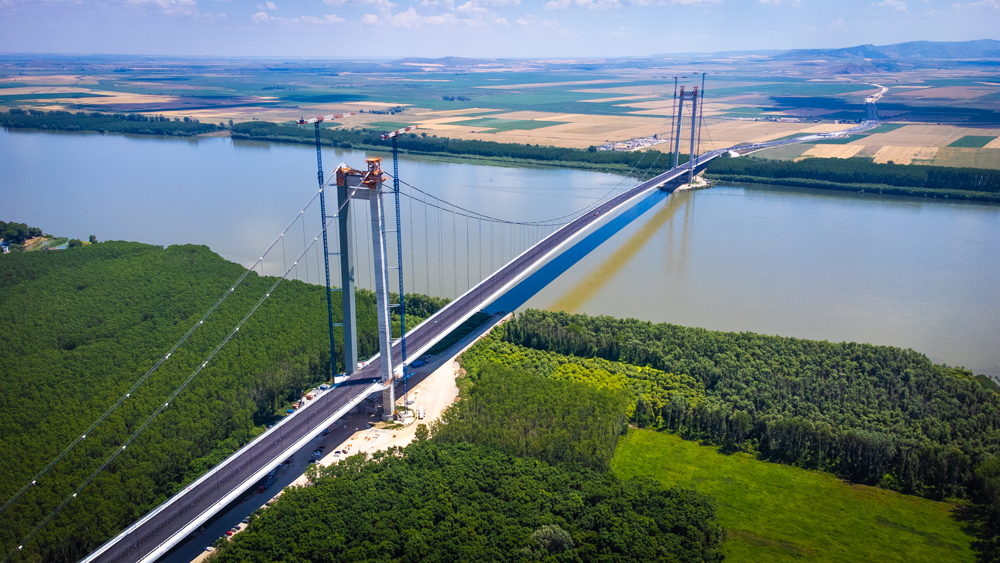The new Brăila Bridge over the Danube is an engineering marvel showing that Romania can carry out complex infrastructure projects. It represents another milestone in the efforts of EU Cohesion Policy to enhance territorial integration and promote economic growth in the EU.
Romanian and EU flags were waved and drivers honked as the first cars crossed the nearly 2 km-long bridge when it was officially opened to the public in July 2023. Dozens of drivers had waited patiently to see Romania’s own version of San Francisco’s Golden Gate Bridge for themselves and claim the honour of being among the first to cross it.
The bridge will increase economic development and road safety in south-eastern Romania, consolidate the Trans-European Transport Network (TEN-T) and strengthen economic, social and territorial cohesion in the EU. European Commissioner for Cohesion and Reforms, Elisa Ferreira said: “This bridge is a statement of how beneficial cohesion policy is for citizens. People no longer need to take the slow and occasionally hazardous ferry trip over the Danube. They can now easily cross the largest river in Europe in minutes, which will have a substantial impact on the region’s economy and on the life of local people and beyond.”
The largest bridge in Romania and the second-largest suspension bridge in mainland Europe allows drivers to cross the Danube in 2-3 minutes, compared with 50 minutes for the ferry crossing. This brings huge time and money savings for local workers and residents, and goods from Moldova and Ukraine can also reach Bucharest more quickly.
Speaking at the inauguration ceremony, European Commissioner for Transport, Adina Vălean said the bridge would benefit the Dobrogea and Moldova regions. “The bridge has special importance in the current geopolitical context. A larger infrastructure capacity in the Danube area is vital for improving EU security and ensuring the transportation of goods transiting Romania from and to Ukraine and Moldova,” she stressed.
The EU contributed €363 million to the bridge’s total cost of nearly €500 million. The bridge is part of the EU’s vision, through its cohesion policy, for strengthening the TEN-T and Romanian transport networks and improving transport safety and cross-border connections.
